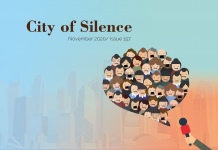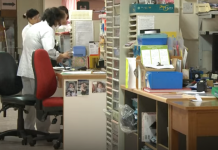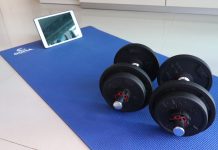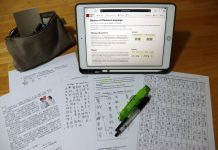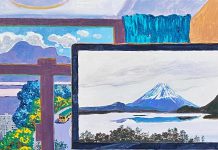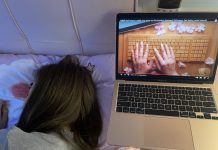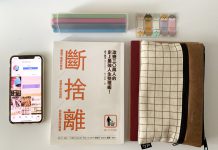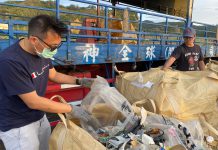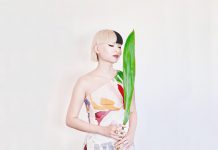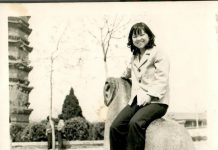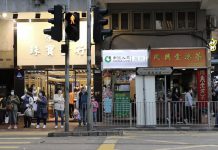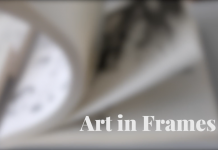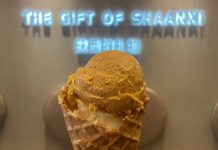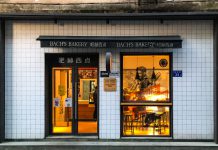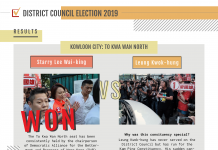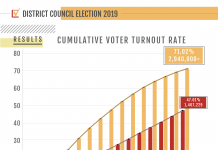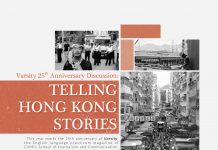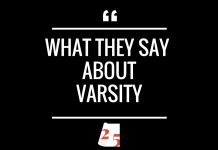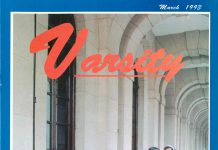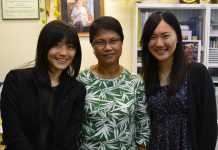Vicky Lau Wan-ki describes her journey from graphic designer to award winning chef
By Cindy Gu
Standing behind the counter of the open kitchen, Vicky Lau Wan-ki rolls up the sleeves of her white snap-front chef’s coat, and inspects the dishes for the night’s dinner menu at Tate Dining Room and Bar . The chef-proprietor has arrived at the restaurant straight from two previous meetings but shows no sign of fatigue.
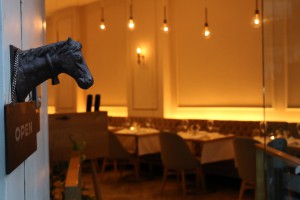
Lau’s work rate and achievements have been impressive since opening Tate in 2012. Just six months after its opening, the restaurant was listed in the Michelin Guide to Hong Kong , making Lau the first female chef in the city to own a one-star Michelin restaurant. At the beginning of 2015, she won the annual accolade of Veuve Clicquot Asia’s Best Female Chef, bringing the 35-year-old rising culinary star more fame, and more diners.
It may come as a surprise that Lau never set out to be a chef, let alone a restauranteur. Her background was in design and she has a degree in graphic communications from New York University. After graduating she worked as an art director in New York for a few years, then returned to Hong Kong and started her own design firm. But after a while, she felt the work could not fulfill her.
“I was designing, but I felt something was missing,” Lau says. She needed a break, and some inspiration. A friend suggested she try cooking, so she decided to go back to school and explore a different aspect of design.
That is how Lau found herself embarking on a journey from graphic design to creating works with food by way of a recreational excursion at the prestigious culinary school, Le Cordon Bleu in Bangkok. She initially intended to take a three-month course with her friends, but ended up so engrossed in the world of cuisine that she decided to attain the Grand Diplôme in both patisserie and cuisine.
Enrolling on the Le Cordon Bleu programme does not require previous cooking experience but getting the diploma is no piece of cake. Lau says she found patisserie the hardest.
“Pastry can be a disaster,” she recalls. “If you didn’t set the time and heat of the oven right, or you miss one simple step, it can just go really wrong. I’ve seen people who just cannot make it.”
To pass the test, students are given a dish to prepare for the final exam, and are graded on criteria such as technique, organisation, taste and presentation. Lau’s skills and talents got her through the exam with the highest grade in the history of Le Cordon Bleu.
Lau did not stop there. She felt she still had much to learn about cooking and in particular she was interested to learn about fine dining in Hong Kong. Armed with her diploma, she landed a job in the kitchen at the Michelin-starred French restaurant Cépage.
According to Chef Sébastien Lepinoy, in 2011, when he was head chef at Cépage, Lau arrived with the CV of a designer but he was curious to see what Lau could bring to the restaurant.
She started as commis chef, where she rotated through different stations for a better understanding of how the kitchen worked. She worked 15 hours a day, and did all kinds of jobs ranging from mopping the floor and cleaning the freezers to preparing ingredients. The process was tiring, but Lau knew it was necessary for her to start from the basics.
After a few weeks, Lepinoy already knew Lau had great potential to become a professional chef. “Vicky was one of my best students,” he says. “She is very motivated and always wants to learn, always interested to talk about cuisine.”
Lau says what she learned most from her stint at Cépage was the importance of teamwork. Designing is a one-person job, but in the kitchen, “you have to rely on each other to make things happen.”
After a year of intense learning at Cépage, Lau made a bold move by striking out on her own on a project that would incorporate both her design sensibilities and appreciation for culinary arts.
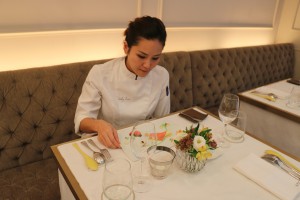
The preparation process was rather painful. She did all the work alone, spending hours and hours looking for a venue, food suppliers and staff, and worked around the clock to figure out the application process for food business licenses. The planning and searching took half a year, and in the last few weeks before Tate’s opening, Lau only managed around three hours of sleep a day.
Her efforts paid off. Tate turned out to be a cozy dining room with around 30 seats and an open kitchen. It is easy for her to walk around and talk to diners. Lau has a staff of eight and to ensure the quality of the food, they only serve dinner.
Lau believes food reflects culture. The dishes at Tate are a mixture of French and Japanese cuisine. Lau says this cooking style reflects her own experiences while growing up.
As a child, Lau used to live with her grandfather, who came from Chaozhou in eastern Guangdong, so she enjoyed Chaozhou cooking at home. Chaozhou cuisine focuses on keeping the natural tastes of the ingredients. Japanese cuisine influences Lau’s cooking style in terms of her wish to keep everything simple and authentic.
During her college years in New York, Lau got the chance to explore that city’s dynamic dining scene. “It’s a melting pot in New York. You get to meet a lot of people from different cultural backgrounds, you get all these ingredients from all over the world, so it’s natural that you would like to experiment with that,” she says.
Lau cooked pretty often too. She watched television food programmes and tried out the recipes afterwards. However, there were a lot of failures.
“I remember there was one time when I almost burnt down my friend’s apartment,” Lau laughs as she recalls the story. “We were making a potato quiche, but the oven overheated and burnt all the cheese inside. The alarm kept going off and we could do nothing about the situation.” They ended up waiting for the cheese to stop burning and had to air out the apartment.
These memories and experiences all contribute to her cooking. Born in Hong Kong and educated in the United States, Lau feels that both cultures influence her thinking. So in her dishes, she creates harmony between eastern and western elements and produces her own style of fusion food.
Lau views food as a medium of expression for her emotions, thoughts and personality. “The idea is that a dish can express something, either it’s from the places I have been, or a poem I have read,” she says, explaining her idea of edible stories.
Lau’s signature dish “Zen Garden”, a matcha petit four is one of her favourite creations and is inspired by the Japanese tea ceremony. She creates the dish on a slate-like plate: white chocolate mousse with matcha powder and cream on top is served on the plate, with peanut powder “sand” and black meringue “rocks” made out of sesame and charcoal bamboo.
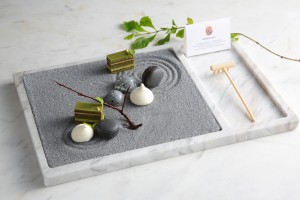
Lau pays close attention to the colours, aromas, and textures of the various ingredients in order to craft her stories on a plate more vividly. In this way she combines what she learned about graphics design with food.
Apart from Tate, she also runs a luxury catering company called Butler, whose clients include top fashion brands such as Hermès. Travelling back and forth between meetings of Tate and Butler, Lau seems to be completely occupied by work. She admits it is hard to find a balance between work and her personal life but she does not regard the time she puts into the culinary industry as a sacrifice.
Lau is delighted by her Asia’s Best Female Chef 2015 award because she thinks it will open doors for her to meet other powerful women. It is an encouragement to Lau, and she hopes this will encourage more women to enter the culinary industry.
While the professional kitchen has traditionally been a male preserve, Lau believes this is changing. Kitchen conditions and technology are improving, which should make it easier for women to thrive in a physically demanding industry. In the Tate kitchen, female chefs account for half of Lau’s team.
“No matter what industry, no matter what gender, there will always be problems. But you just adapt to it,” she says with a smile. “Just don’t be afraid to try. If you seek, you’ll find.”
Edited by Angel Liu




